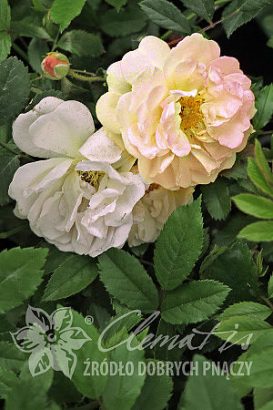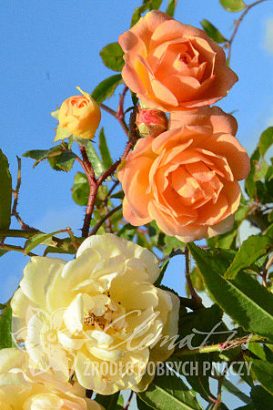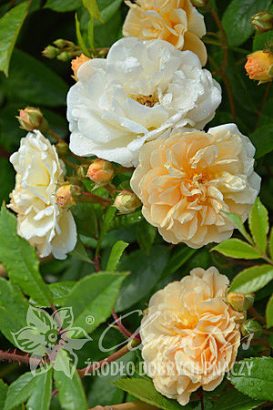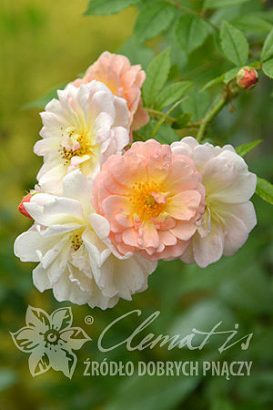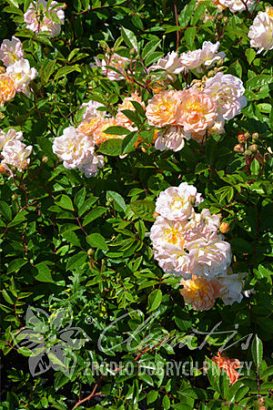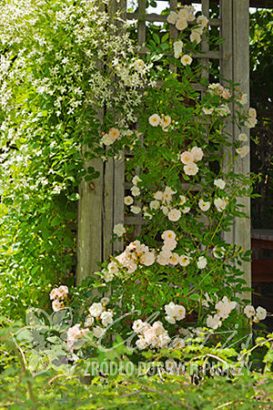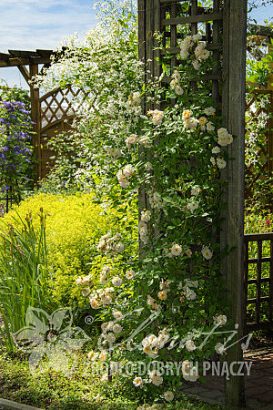Rosa ‘Ghislaine de Féligonde’
Climbing rose 'Ghislaine de Féligonde'| 装饰形式 | fragrant flowers |
|---|---|
| 花色 | apricot to white-pink |
| 植株高度 | 2-3 m |
| 花期 | VI, VII, VIII, IX, X |
| 年增长率 | 1-2 m |
| 种植方位 | sun, 3/4 sun, 1/2 sun |
| 修剪方式 | Zones 6 - 8 |
A prolific cultivar producing scented flowers of beautiful apricot colour. Flowers appear in a number of cycles from June to October. The shoots have almost no prickles.
WHAT IT LOOKS LIKE: Double, scented flowers, bright orange at the beginning, later fading through apricot to white-pink colour, 4 cm across. Bloom abundantly from June to October (repeating the cycle). Leaves smallish, glossy, dark green.
HOW IT GROWS: A primitive climber – does not climb over supports but leans on them. The height of the plant depends mainly on the support size. In Poland it reaches 2-3 m. The support needs to be large and solid.
WHERE TO PLANT: Grows well in any type of soil, however it does not tolerate compacted and heavy or very sandy and dry soil. Thrives in light, moderately permeable ground of slightly acidic or neutral pH. Requires a sunny or semi-shaded site. Fully frost hardy (zone 6).
HOW TO PLANT AND MAINTAIN: Before planting immerse the plant container in water for 10-30 min. Place the root ball in a 40 x 40 x 40 cm hole with a 10 cm layer of well-rotten manure or compost, 0.5-1 cm deeper than it was before. Fill the hole with fertile soil. Does not require regular pruning.To maintain the shrub’s habit, its shoots need to be tied to supports. Plants grown from their own roots do not cause problems with the rootstock shoots.
HOW TO APPLY: Climbing roses are often planted along natural supports. The cultivar is recommended for planting along larger supports in parks and garden, in areas designed both in formal (e.g. by the entrance) and natural style. It can be planted along trellises, gates, walls and fences as well as by pergolas and arbours. It’s flexible and easily follows the support’s shape.
ORIGIN: Raised by Eugène Turbat, France, 1916.

